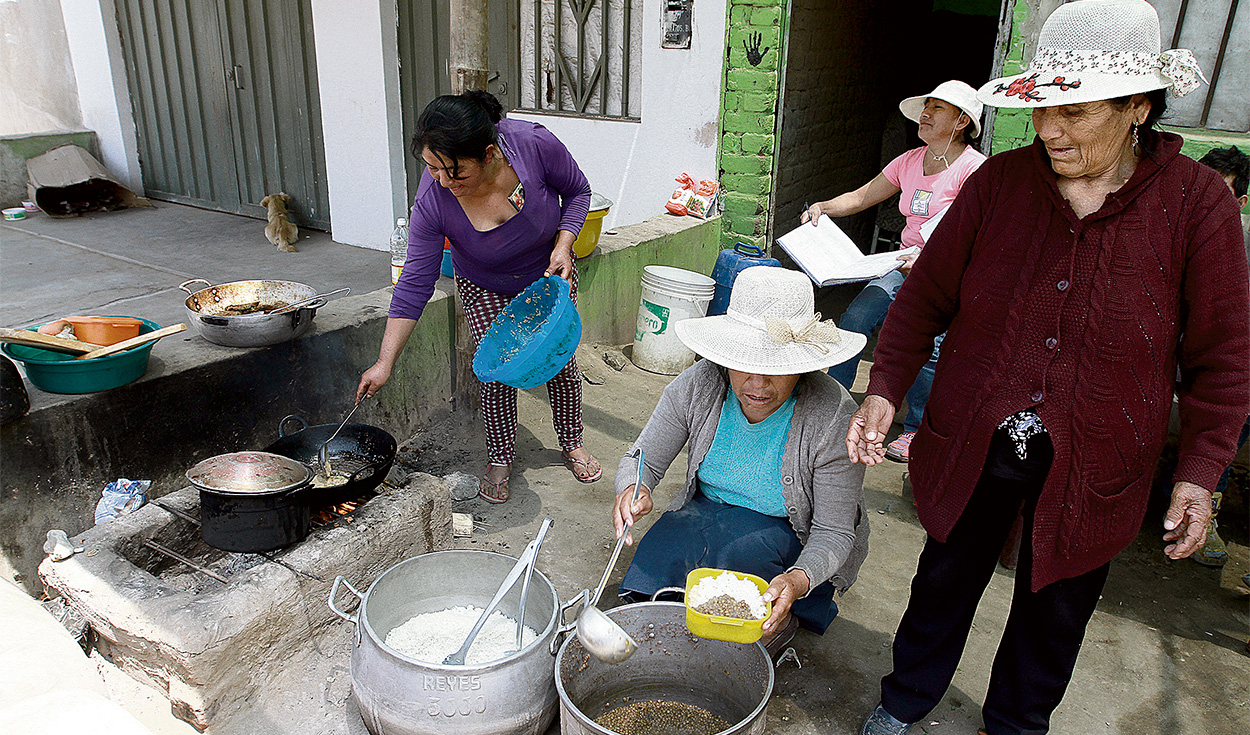
According to the National Institute of Statistics and Informatics (INEI), almost a third of Peruvians closed 2022 in the monetary poverty absolute, a situation that reflects the increase in precariousness in Peruvian households.
And it is that, despite the macroeconomic bonanza that catapults us as one of the most solid countries in the region, poverty continues to rise.
In detail, there are 9 million 184,000 Peruvians subject to poverty, just over two and a half million additional compatriots compared to the year before the coronavirus.
At the regional level, according to the INEI, the hardest hit by the increase in poverty are Ayacucho, Cajamarca, Huancavelica, Huánuco, Loreto and Pasco, with an average ratio ranging between 39.4% and 43.3%.
In addition, extreme poverty —that is, the handful of Peruvians who are in the underworld of abandonment— reaches a universe of 1 million 673,000 people. In total, there are 741,000 more compatriots in this condition if we look at 2019.
Likewise, according to INEI, three tenths of all Peruvians are also in a vulnerable condition and could eventually fall into poverty (32.3% of the population).
What happened despite the growth of GDP? According to IRD researcher Javier Herrera, poverty increased despite the economic rebound because there is low growth expectation.
In his opinion, we have returned to what we have seen in more than 15 years, and it is crucial that poverty in urban areas be addressed, since “nine out of ten Peruvians have a hard time” in this area.
Despite the fact that the poverty rate in the urban area reached 24.1%, and in the urban area 41.1%, in his opinion, it is crucial that public policies be redirected to close the gaps in this spectrum, considering that Pensión 65 and Contigo focus on the marginal population of rural areas.
The reading of the Central Reserve Bank of Peru (BCRP) coincides with what was previously indicated by BBVA Research and Cepal, which estimate that poverty will continue to be above 25% in the coming years. What’s more, the Government hopes that poverty will normalize to what was seen before the coronavirus until 2030. According to President Dina Boluarte, it would reach 15% at the end of this decade, which is why the progress of poverty must be observed and attacked. Poverty not only in monetary terms, but also in access to basic services, such as water, drainage, and in areas such as education and health.
breaking down poverty
By sex, 27.8% of the female population in Peru is poor, and 27.2% includes men. By age, the most affected population group is 0 to 17 years old (36.7%), while, by educational level, those Peruvians with primary education are the most subject to poverty (36.8%).
In addition, 78.6% of poor people have Comprehensive Health Insurance (SIS), 91.4% work informally, although 90.9% have a mobile phone.
From a multidimensional point of view, 45.9% of Peruvians are underemployed and 36.2% have a caloric deficit (barometer of food intake in the country).
He INEI warns that 29.9% do not have access to water, sanitation, and electricity, and 50.7%—that is, half of Peru—does not have water, drainage, electricity, telephone service, or internet.
rising products
During 2022, the prices of the basic basket that increased the most are those of brown sugar (35.1%), white potatoes (45%) and colored potatoes (36.4%). There are also French bread (33.7%) and vegetable oil (30.4%).
Herrera reiterates that the pressure on prices will affect those who have less and, despite the slight decrease in the indicators, we are still far from regularizing it.
Promote direct aid policies
IRD researcher Javier Herrera reiterated that there are needs to be addressed and that the current model has not covered them.
Should direct aid policies continue? From the World Bank, for example, they believe so, as long as they now focus and direct the urban environment, where poverty hits more compatriots.
It is important to mention that the World Bank indicated that 85% of poverty reduction is the product of economic growth. However, according to projections by multilateral organizations, banks, the BCRP and the Ministry of Economy and Finance (MEF) itself, this year it would grow below 3%.
The numbers
- S/1,089 was the real income per monthly inhabitant during 2022, according to the INEI.
- S/825 was the real average monthly expense per person in 2022, an increase of 0.7% compared to 2021.
The word
Javier Herrera, IRD researcher
“When we compare the level of spending in 2022 with respect to the previous year, what we see is a setback. We are at the same level as 11 years ago. We have not made progress and that is worrying.”
Source: Larepublica
Alia is a professional author and journalist, working at 247 news agency. She writes on various topics from economy news to general interest pieces, providing readers with relevant and informative content. With years of experience, she brings a unique perspective and in-depth analysis to her work.












